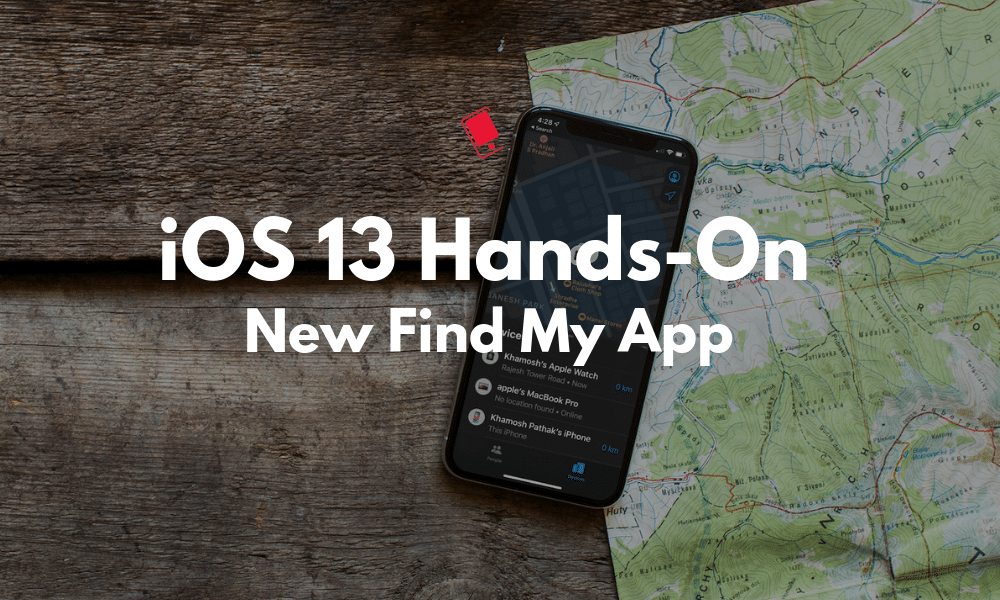
One of the most interesting changes in iOS 13 and iPadOS 13 is the curiously named Find My app. It clubs the Find my iPhone and Find My Friends app into one. And add some intriguing new features. Chief of which is the fact that you’ll be able to find your devices even when they’re offline. Take a look at our hands-on below to understand how the new Find My app works.
Find my App in iOS 13, iPadOS 13, macOS Catalina
This article is part of our ongoing hands-on series for iOS 13 and iPadOS 13. To learn about the new features in iOS 13 and iPadOS 13, check out our lists for What’s New in iOS 13 and What’s New in iPadOS 13.
How Find My Feature Works
Find My feature uses crowd-sourced location data. This way you can locale an Apple device even if it’s not connected to the Internet. This is mostly thanks to Bluetooth beacons. Especially, Apple is turning every Apple device into a unique Bluetooth beacon. All Apple devices in the vicinity can talk to each other. As communication happens between two devices locally and using Bluetooth, no real location data is shared to the cloud or to an app. Even the Bluetooth beacon data that passes between two devices is anonymous and encrypted.
What this means is that Apple is forming an invisible, anonymous, and encrypted Bluetooth signaling network between two devices.
The way it works, it actually quite beautiful. Here’s how Apple sets the stage:
Say someone steals your MacBook. Even if the thief carries it around closed and disconnected from the internet, your laptop will emit its rotating public key via Bluetooth. A nearby stranger’s iPhone, with no interaction from its owner, will pick up the signal, check its own location, and encrypt that location data using the public key it picked up from the laptop. The public key doesn’t contain any identifying information, and since it frequently rotates, the stranger’s iPhone can’t link the laptop to its prior locations either.
The stranger’s iPhone then uploads two things to Apple’s server: The encrypted location, and a hash of the laptop’s public key, which will serve as an identifier. Since Apple doesn’t have the private key, it can’t decrypt the location.
It’s only this secured data that is sent between multiple Apple devices and then makes it to your Apple device. And as your Apple device has the proper authentication, it is actually required to unencrypted the location data.
How to Use Find My App
The new Find My app works mostly like the Find my iPhone app before it. The new app is divided into two sections – People and Devices.

The People section is what Find My Friends used to be. You can view the location of your friends on the map. And you can instantly start sharing your location as well.

The Devices section is where you’ll find all your devices, online or offline. You’ll be able to view the status, their location and quickly navigate to their last known location. You can also erase the device or mark it as lost from here.
Take a Look At Our Other Hands-on Posts
The most interesting part of the new Find My app is actually invisible to the user. Other than the underlying technology, not much is new here. Although, once you get over the weird name, merging the two similar apps into one makes a lot of sense. Now you can just use one app to find where your family members are and where their devices are (because Family Sharing devices will also now show up in the Devices section).
This post is part of our on-going Hands-on series where we try and talk about the new features in iOS 13 and iPadOS 13. Take a look at some of the other posts we’ve done so far:
You can download iOS 13 beta right now to check it out on your iPhone. If you need help, you can check our post on how to install iOS 13 beta for the step-by-step instructions.
What are some of your favorite new features in iOS 13 and iPadOS 13? Share with us in the comments below.